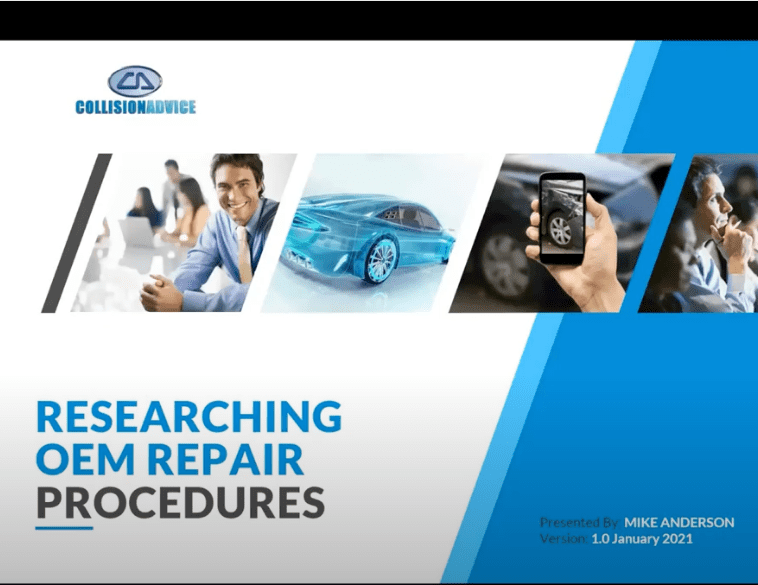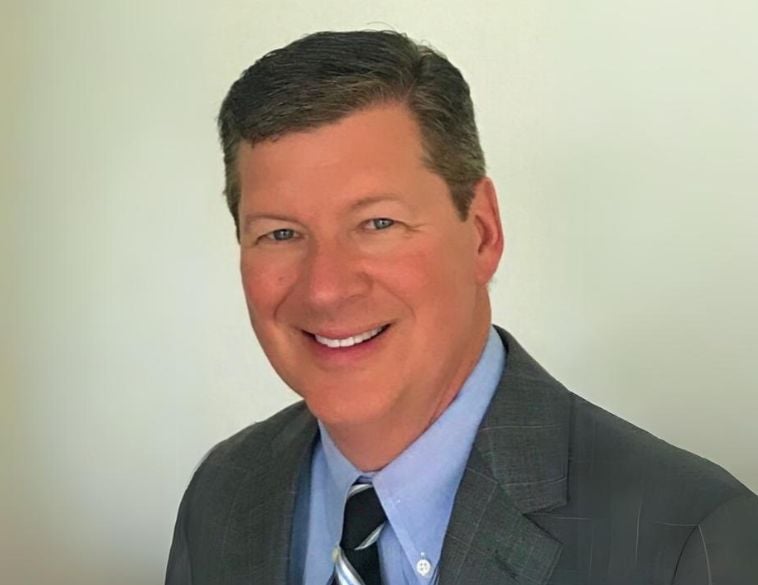What constitutes a safe and proper collision repair today?
Both the question and the answer are not as simple as they might first appear.
Rapidly increasing vehicle complexity means that in order for a collision centre to perform a repair, even something that might appear simple such as a bumper cover or exterior mirror replacement, requires a thorough understanding of OEM repair procedures, and ensuring the information available is as current and up-to-date as possible.
To help provide valuable insight, in March, the Canadian Collision Industry Forum (CCIF) hosted a webinar entitled OEM Repair Procedures, Best Practices moderated by Patrice Marcil, Learning and Development Director, North America, Axalta Coating Systems, and featuring Mike Anderson, Founder, Collision Advice and Tracy Dombrowski, President, ProMetrix Training.
What’s required
The aim was to debunk some of the myths out there regarding what constitutes following OEM repair procedures and why it’s so imperative that from the initial estimate through the final inspection and delivery; the repair is done properly and the vehicle is returned to fully functioning condition.
“We are facing another pandemic,” said Anderson “and I’m not talking about COVID-19.”
In essence, he was referring to the collision repair industry and the fact that many shops and technicians are simply not aware of what constitutes a proper repair, nor the actual time required to perform it.
Using a quarter panel replacement on a 2019 Toyota Camry as an example, Anderson asked the audience how many repair procedures were required to perform this procedure.
It turns out that there are 98 procedures and 490 pages that needed to be pulled to perform this repair.
When you take into account that the average person reads a page in around 5-6 minutes, to read 490 pages would take 40 hours and 50 minutes and that’s just for a single repair plan!
Then you also have to factor in that the technician also has to review that repair plan.
More complex process
Given the time required, it’s understandable why it can be tempting to skip certain steps but doing so can have major consequences.
Even when it comes to something like disconnecting a battery, today the process is far more complicated than in the past and each OEM has a different procedure for performing this task.
Anderson notes that when doing estimates, not only is it important to get the terminology correct (D&R the battery versus, R&R the battery) but that most, if not all OEMs require disconnecting the battery on any late-model vehicle before touching any electrical component, which today, can be just about anything.
And it’s important to note that when reconnecting the battery, many OEMs require additional steps to take place. These can range from activating the power window regulators, to checking the DTC memories on all modules in the vehicle, to ensuring the vehicle is in service mode prior to beginning the work, especially if it has telematics like OnStar.
And, as Anderson notes, it’s important to document all this information and follow the OEM procedure, so if an insurer questions it, the shop is able to show them.
One way he suggests, we should think about OEM collision repair procedures on modern vehicle, is like building codes.
When a building is constructed or renovated, building codes are put in place to meet the minimum required standard for safety and structural integrity against all manner of issues including extreme weather and fire.
So, if we have to research building codes, why not do the same when it comes to vehicles?
Design and materials
Not only is it important to understand the correct way to repair a particular vehicle, but also to understand how it’s designed, which materials it’s made from and how it performs in a collision.
“One of the biggest reasons we should research OEM repair procedures,” said Anderson is because they can “tell us where to look for damage when we are doing the estimate and where the built-in crush zones in the vehicle are and how they are designed to collapse in specific areas.”
He notes that by studying this and understanding how inertia forces travel through a vehicle on impact, it can really aid in delivering more accurate estimates and in turn, making better decisions and better quality repairs.
Besides, Anderson stressed that it is important that technicians research OEM procedures on every vehicle, each and every time they are doing a repair, since vehicle design, information and procedures can quickly change, sometimes in a matter of weeks.
For example, an OEM can change a procedure in how a quarter panel is replaced, a roof section is removed, or how structural repairs are performed, often within the course of a model year, or sometimes even more frequently—as much as four times a year or even more.
Yet, with both vehicles and the repairs themselves becoming more complex and time consuming, who should be sifting through all this OEM repair information is often a question shops need to ask.
Anderson pointed to some survey results that said that out of shops consulted:
- 49% said OEM repair procedure research was done by the estimator or repair planner
- 31% said it was done by the estimator or technician
- 8% have a designated person doing it (a growing trend in many shops)
- 5% have a parts person doing it
- 2% have a technician doing it
The key to a successful repair plan is not only having one person doing the research, but having others involved in the process, including the technician and the painter to review the information.
Having a dedicated person to research OEM repair procedures can save time for the shop, but the trick is to make sure there are effective and efficient channels of communication between this person and the others involved in the repair process, including the technicians and painters.
Also, where shops and their staff are accessing this information also has a significant impact on the outcome. For the most current and up-to-date info, including build data on the vehicle, Anderson noted that OEM websites are the preferred option, plus they may also be able to integrate with OEM scan tools and if there are any questions, they can be submitted directly to the OEM.

Current and accurate OEM information is essential to a successful and safe repair. Photo: Huw Evans
Pros and cons
Third party sites are not always as current from an information standpoint as OEM sites, since vehicle manufacturers don’t or aren’t able to provide them with the most recent data and changes.
However, third-party sites are often able to integrate with the shop’s estimating software and may have more standardization than OEM websites, which in some cases can save time.
Yet they cannot identify telematics subscriptions, integrate with OEM scan tools and are not always able to identify every single part, particularly one-time use items, which can limit their effectiveness.
For many shops on OEM certification programs, free subscriptions to OEM repair websites are available, but as Anderson noted, there are still shops out there that don’t take advantage of them.
Besides, knowing where to access the repair information you need is critically important, since currently, OEMs organize the information on their sites differently, so becoming familiar with how to navigate the site and access what you need is essential, as is identifying the terminology the OEM uses.
One may name an item as a quarter panel, another might label it as a rear fender or rear side panel, so it’s important to understand what parts are labeled, as it will make searching for the right information much easier.
Both OEMs and services like I-CAR offer useful tutorials to help access OEM repair data online, which can ultimately save both shops and technicians a significant amount of time.
Ultimately, as Anderson noted, when performing any type of collision repairs today, from replacing a bumper cover to major structural repairs, following the latest OEM repair procedures each and every time is always the best strategy, as is documenting and saving that repair information, should it every be needed in case of potential disputes or audits.



